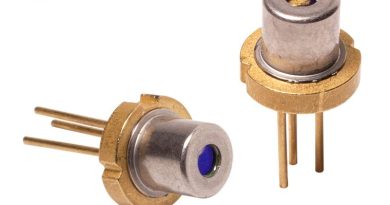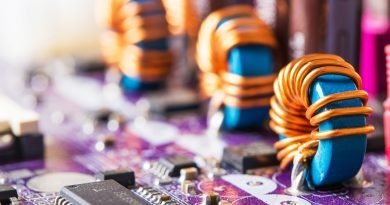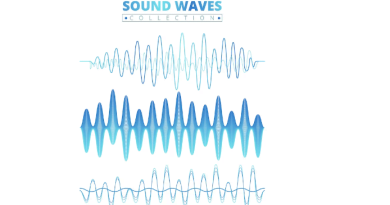What are Control Systems – Working, Types and their Applications
What are Control Systems? Working, Types, and their Application?
Table of Contents
Introduction to Control Systems
Components of Control Systems
- Controller
- Actuator
- Sensor
- Controlled Process
- Final Control Element
Working of Control Systems
- Setting the Reference
- Measuring the Output
- Comparing to the Reference
- Computing Controller Output
- Driving the Final Control Element
- Influencing the Process
Types of Control Systems
- Open Loop Control Systems
- Closed Loop Control Systems
- Feedforward Control Systems
Control System Applications
- Temperature Control Systems
- Pressure Control Systems
- Flow Control Systems
- Level Control Systems
- Speed Control Systems
Advanced Control Strategies and Methods
- Proportional-Integral-Derivative (PID) Control
- Adaptive Control
- Nonlinear Control
- Optimal Control
- Robust Control
- Intelligent Control
Implementing Control Systems
- Analog Electronic Controllers
- Digital Controllers and PLCs
- Distributed Control Systems
- Supervisory Control and Data Acquisition Systems
Control System Design Considerations
- Stability and Response Time
- Robustness
- Controller Tuning
- Disturbance Rejection
- Energy Efficiency
- Cybersecurity
The Future of Control Systems
- Greater Intelligence and Autonomy
- Human-Machine Interfaces
- Miniaturization
- Enhanced Predictive Abilities
- Expanded Connectivity and Remote Access
Conclusion
What are Control Systems? Working, Types, and their Application
Introduction to Control Systems
Control systems are computational systems that monitor and influence physical processes based on feedback from sensors and the execution of control algorithms. They are found everywhere, from home thermostats to cutting-edge manufacturing systems. By automatically regulating temperature, pressure, speed, flow, and other process variables, control systems save energy, improve safety, enhance quality, and optimize system performance. At their core, control systems apply actuation to maintain a desired operating point by comparing it to a reference and minimizing deviations. Effective control systems are carefully designed considering stability, response times, tuning, failure response, and cybersecurity. This guide will explore the key elements, working principles, types, design considerations, and applications of modern control systems.
Components of Control Systems
The main components of a basic control system include:
Controller
It contains the control algorithm that computes actuator inputs based on setpoints and sensor feedback.
Actuator
Provides the manipulations that alter the process based on controller outputs. Common actuators are valves, motors, and heating elements.
Sensor
Measures key process variables like temperature, pressure, or flow rate and feeds them back to the controller.
Controlled Process
The physical system, reactions, transfers, or mechanisms being regulated by the control system.
Final Control Element
The interface between the actuator and the process, like a control valve or motor drive.
Working of Control Systems
Control systems operate through the following fundamental steps:
Setting the Reference
The target setpoint value for the process variable, like the desired temperature, is set.
Measuring the Output
Sensors measure the actual process variable, like current temperature.
Comparing to the Reference
The controller software determines the error between the setpoint and the measured value.
Computing Controller Output
The controller calculates the needed manipulation based on its control algorithm and error value.
Driving the Final Control Element
The controller actuates the final control element, like opening a steam valve to a particular position.
Influencing the Process
The actuator and final control element alter the process as needed to reach the setpoint.
Types of Control Systems
There are three major classes of control systems:
Open Loop Control Systems
Actuators run pre-determined programs without any sensor feedback. Used for simplicity or fast response.
Closed Loop Control Systems
Sensors feedback the process variable to allow actuation based on deviations from setpoints for precision.
Feedforward Control Systems
Anticipate process disturbances using additional inputs besides the process variable. Improve response times.
Control System Applications
Control systems are ubiquitous across industries and applications:
Temperature Control Systems
To maintain set temperatures, heating and refrigeration systems use thermostat controllers and actuators like furnaces, chillers, valves, and HVAC units.
Pressure Control Systems
Sensors measure tank, reactor, or pipeline pressures. Actuators like pumps and valves regulate the pressures to desired levels.
Flow Control Systems
Flow meters and valves ensure proper fluid velocities, critical in pipelines, chemical processing, and pumps.
Level Control Systems
Radar, ultrasonic, or float-level sensors paired with valves maintain proper liquid levels in storage tanks and reservoirs.
Speed Control Systems
Drives, brakes, or power regulation control the rotational speed of motors and engines for conveyors, machines, vehicles, etc.
Advanced Control Strategies and Methods
Innovations in control theory and digital processing enable sophisticated techniques:
Proportional-Integral-Derivative (PID) Control
The most common simple feedback controller takes into account errors, rate of error change, and past errors.
Adaptive Control
Adaptive systems alter parameters in response to changing dynamics like varying loads or wear to components.
Nonlinear Control
Special nonlinear control techniques handle processes with complex nonlinear responses.
Optimal Control
Uses optimization to compute control actions that consider multiple objectives like energy use and response time.
Robust Control
Controllers withstand model inaccuracies and minimize sensitivity to disturbances and noise.
Intelligent Control
Uses fuzzy logic, neural networks, and other AI methods to implement sophisticated control strategies.
Implementing Control Systems
Control algorithms execute on different hardware platforms:
Analog Electronic Controllers
Use analog amplifiers, logic gates, and other circuits to compute control outputs from sensor inputs.
Digital Controllers and PLCs
Microprocessors and programmable logic chips provide programming flexibility, intelligence, and connectivity.
Distributed Control Systems
Control functions are distributed across networked segments for large processes like plants while centralizing supervisory control.
Supervisory Control and Data Acquisition Systems
SCADA systems act as centralized data concentrators and supervisory controllers for large distribution processes like pipelines.
Control System Design Considerations
Numerous interdisciplinary factors shape control system designs:
Stability and Response Time
Control systems must rapidly settle at setpoints without dangerous oscillations.
Robustness
The system’s ability to reject internal and external disturbances while avoiding instability.
Controller Tuning
Tuning optimizes dynamic response without overshooting or sluggishness.
Disturbance Rejection
Minimizing the impact of expected load changes, noise, and parameter variations.
Energy Efficiency
Balancing regulation performance against energy consumed by actuators.
Cybersecurity
Securing controller programming, networking, remote access, and sensor inputs from tampering.
The Future of Control Systems
Emerging trends will shape control systems in the future:
Greater Intelligence and Autonomy
More adaptive, predictive, and collaborative behavior between interconnected systems with less human oversight.
Human-Machine Interfaces
Intuitive supervisory control and insights into system status, predictions, and decision-making logic.
Miniaturization
Microcontrollers, tiny sensors, and compact actuators will enable broad embedded control applications.
Enhanced Predictive Abilities
Digital twins, machine learning, and big data analytics will enable smarter forecasting and decision-making.
Expanded Connectivity and Remote Access
Control systems will increasingly be networked globally, enabling advanced monitoring, control, and optimization.
Conclusion
Control systems continuously and automatically regulate process variables by executing algorithms that minimize the difference between sensor measurements and desired setpoints. Understanding control system components, working principles, types, design methodology, applications, and emerging innovations provides a foundation for engineering these widely useful computerized systems. As computers become more powerful and interconnected, control systems will continue advancing, finding expanded applications in our infrastructure, appliances, vehicles, factories, and nearly every engineered system that requires autonomous, efficient, and precise regulation.
Frequently Asked Questions about Control Systems
What are the main components of a basic feedback control system?
The key components are sensors, controllers, actuators, control processes, setpoints, and final control elements like control valves.
What are the advantages of closed-loop control systems versus open-loop systems?
Closed-loop systems use feedback for greater accuracy, self-correction, and disturbance rejection than open-loop systems.
What are some typical applications of control systems?
Control systems are ubiquitous, but some common examples include process controls, autonomous vehicles, electronics, HVAC, robotics, and motor controls.
How do PID controllers work?
PID controllers minimize error using calculated outputs based on the error signal’s proportional, integral, and derivative effects over time.
What are some recent trends affecting control system design?
Important trends include distributed systems, machine learning, remote connectivity, miniaturization, model-based predictive control, and human-system interaction.




